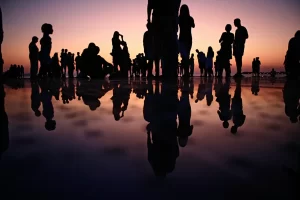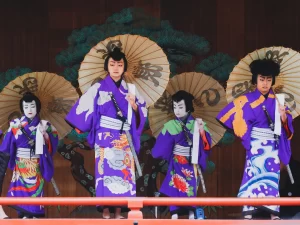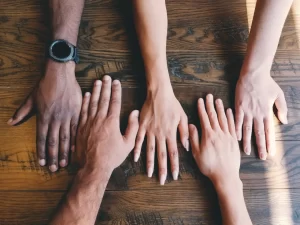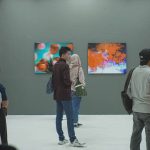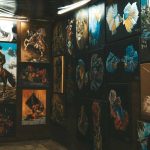Introduction to Innovative Art Promotion
Introduction to Art’s Impact on Society: A Reflection of Change and Values
Art, in its myriad forms, serves as a profound mirror reflecting the ever-evolving tapestry of human society. From visual masterpieces to soul-stirring literature and impactful music, the diverse realms of artistic expression weave narratives that capture the essence of historical, cultural, and societal shifts. This article delves into the multifaceted role of art in shaping and reflecting the values that define us, exploring its influences across three generations.
In examining the impact of art on society, one cannot ignore its ability to encapsulate the spirit of an era. Visual art, for instance, serves as a visual chronicle, offering glimpses into the zeitgeist of a particular time period. From the intricate details of Renaissance paintings to the bold strokes of abstract expressionism, each artistic movement tells a unique story about the prevailing ideologies, social structures, and cultural ethos.
Art as a Mirror of Society
Definition of art and its diverse forms
Art encompasses a rich spectrum of expressions, spanning the visual arts, literature, music, and performing arts. Each form holds a unique power to convey emotions, ideas, and perspectives, forming an integral part of our shared human experience.
Art has the remarkable ability to transcend cultural and linguistic barriers, serving as a universal language that connects people across diverse backgrounds. It acts as a mirror reflecting the complexities of human existence and offering a glimpse into different worlds and narratives. Whether it be a brushstroke on canvas, a melody in the air, or words on a page, art has the capacity to ignite imagination, foster empathy, and stimulate intellectual discourse. In embracing the multitude of artistic expressions, we not only celebrate our collective creativity but also gain insights into the beauty and diversity that define the human spirit.
Art as a reflection of historical and cultural context
Delving into the annals of artistic movements like the Renaissance and Modernism reveals a profound connection between art and the eras that birthed them. These movements are windows into social, political, and economic realities, serving as a testament to the collective consciousness of a society.
Examining the annals of artistic movements such as the Renaissance and Modernism unveils a profound connection between art and the eras that birthed them. These movements act as windows into social, political, and economic realities, serving as a testament to the collective consciousness of a society. The Renaissance, for instance, marked a rebirth of classical ideas and a revival of humanism, mirroring the cultural shift towards a renewed appreciation for knowledge, science, and individualism. Similarly, Modernism reflected the tumultuous changes of the 20th century, capturing the fragmentation and complexities of an era marked by rapid industrialization, global conflicts, and cultural transformations. Through the lens of these artistic movements, we gain not only aesthetic appreciation but also invaluable insights into the historical tapestry that has shaped our world.
Art as a record of societal values and beliefs
Art, as a cultural artifact, becomes a repository of societal ideals, norms, and customs. Beyond mainstream narratives, it offers a canvas for marginalized voices, shedding light on perspectives that challenge prevailing notions.In this way, art becomes a dynamic force in the ongoing dialogue about identity, diversity, and social justice. Artists from underrepresented communities often use their creativity to dismantle stereotypes, address systemic issues, and amplify stories that have historically been silenced. By providing a platform for these marginalized voices, art becomes a catalyst for social change, fostering a deeper understanding of the complexities inherent in the human experience. In essence, it serves as a mirror that reflects not only who we are but also who we aspire to be as a society.
Influences of Art on Society
Shaping individual perspectives and emotions
The transformative power of art lies in its ability to evoke empathy, stimulate critical thinking, and inspire personal growth. Through various mediums, it becomes a catalyst for understanding and exploring one’s identity within a broader societal context. Through the amazing ability of art to transcend linguistic barriers, people may viscerally connect with deep concepts and emotions. Art can question assumptions, provoke thought, and promote a feeling of our common humanity, whether it takes the form of an enthralling picture, a moving book, or an emotionally charged musical composition. As a result, it turns into a mirror that reflects the variety of human experiences and a lighthouse that leads people on a life-changing path of self-discovery and interpersonal connection.
Influencing social and political change
Art emerges as a potent tool for activism, sparking awareness and catalyzing movements that challenge injustices. Whether through protest songs or visual activism, artists have played pivotal roles in advocating for social and political change. Art has the power to capture the zeitgeist of a society, becoming a mirror that reflects its triumphs, struggles, and inequalities. From the powerful brushstrokes of political murals to the poignant lyrics of protest anthems, creative expressions become a call to action, inspiring collective consciousness and mobilizing communities. Through their work, artists contribute to shaping narratives that question the status quo, confront systemic issues, and push for a more just and equitable world. As society grapples with complex issues, art stands as a dynamic force capable of challenging norms, provoking dialogue, and ultimately paving the way for positive societal transformation.
Building and uniting communities
Art serves as a communal language, fostering shared experiences that transcend cultural boundaries. Communities are built and strengthened through collective appreciation and participation in the arts, promoting cultural exchange and mutual understanding.
Art acts as a powerful catalyst in building and uniting communities, serving as a communal language that fosters shared experiences transcending cultural boundaries. The arts have the unique ability to bring people together, creating spaces where diverse individuals can connect, appreciate, and participate collectively. Through shared artistic endeavors, communities are not only built but also strengthened, promoting cultural exchange and mutual understanding.
Case Studies: Examining Specific Examples
-Protest Song: “Blowin’ in the Wind” by Bob Dylan
-Literary Work: “To Kill a Mockingbird” by Harper Lee
-Visual Art Piece: “Guernica” by Pablo Picasso
“Blowin’ in the Wind” by Bob Dylan
-Context of creation and historical significance: Born in the turbulence of the 1960s civil rights movement, the song became an anthem for social change.
-Impact on individual perspectives and societal discourse: It challenged the status quo, urging listeners to question societal norms and inequality.
-Lasting legacy and continued relevance: Decades later, its lyrics remain poignant, resonating with contemporary social justice movements.
“To Kill a Mockingbird” by Harper Lee
-Context of creation and historical significance: Written during the Civil Rights Movement, the novel offered a profound moral critique of racial injustice and its psychological costs in the American South.
-Impact on individual perspectives and societal discourse: It ignited conversations about racial inequality, fostering empathy and understanding.
-Lasting legacy and continued relevance: The novel remains a timeless exploration of moral conscience and societal prejudices.
“Guernica” by Pablo Picasso
-Context of creation and historical significance: A response to the horrors of the Spanish Civil War, Picasso’s masterpiece depicts the brutality of conflict.
-Impact on individual perspectives and societal discourse: It became a symbol of anti-war sentiment, prompting reflection on the consequences of violence.
-Lasting legacy and continued relevance: “Guernica” continues to be a powerful anti-war statement, transcending its original context.
Conclusion: Art’s Enduring Relevance:
Art, as a dynamic force, not only mirrors societal narratives but also actively molds them, serving as an enduring commentary on our collective human experience and bridging gaps. The dynamic relationship between art and societal evolution constitutes an ongoing dialogue, with each generation playing a crucial role in shaping the shared narrative. This makes art a powerful catalyst for change, continually pushing boundaries and challenging established norms. In our journey through the intricacies of the contemporary world, the imperative to engage with art becomes increasingly relevant. By fostering appreciation, active participation, and meaningful dialogue, we can effectively harness the transformative power of art to propel positive societal change.
Key Takeaways
| Key Takeaways | Relevance |
| Art mirrors historical and cultural contexts | Understanding the roots of artistic movements enhances our grasp of societal development. |
| Art shapes individual perspectives and emotions | The transformative impact of art on personal growth and identity exploration is profound. |
| Art influences social and political change | Recognizing art as a tool for activism underscores its role in challenging and reshaping societal norms. |
| Art builds and unites communities | Shared art experiences foster cultural exchange, promoting unity and understanding. |
| Specific examples showcase art’s lasting impact | Examining case studies demonstrates the enduring relevance of art across diverse contexts. |
Frequently Asked Questions
How does art reflect historical and cultural context?
Artistic movements often emerge as responses to the socio-political climate, providing a visual and cultural representation of the era.
Can art truly catalyze social and political change?
Yes, art has historically served as a powerful catalyst for change by raising awareness, inspiring activism, and challenging societal injustices.
Why are specific examples crucial to understanding art’s impact?
Examining specific artworks allows for a detailed analysis of their context, significance, and enduring legacy, which contributes to our understanding of art’s broader impact.
How can individuals engage with art for positive change?
Actively participating in art appreciation and discussions and supporting artists whose work aligns with positive societal values can contribute to meaningful change.
Is art’s impact limited to a specific time period?
While certain works may be rooted in a particular era, the themes explored in art often transcend time, maintaining relevance and impacting future generations.


